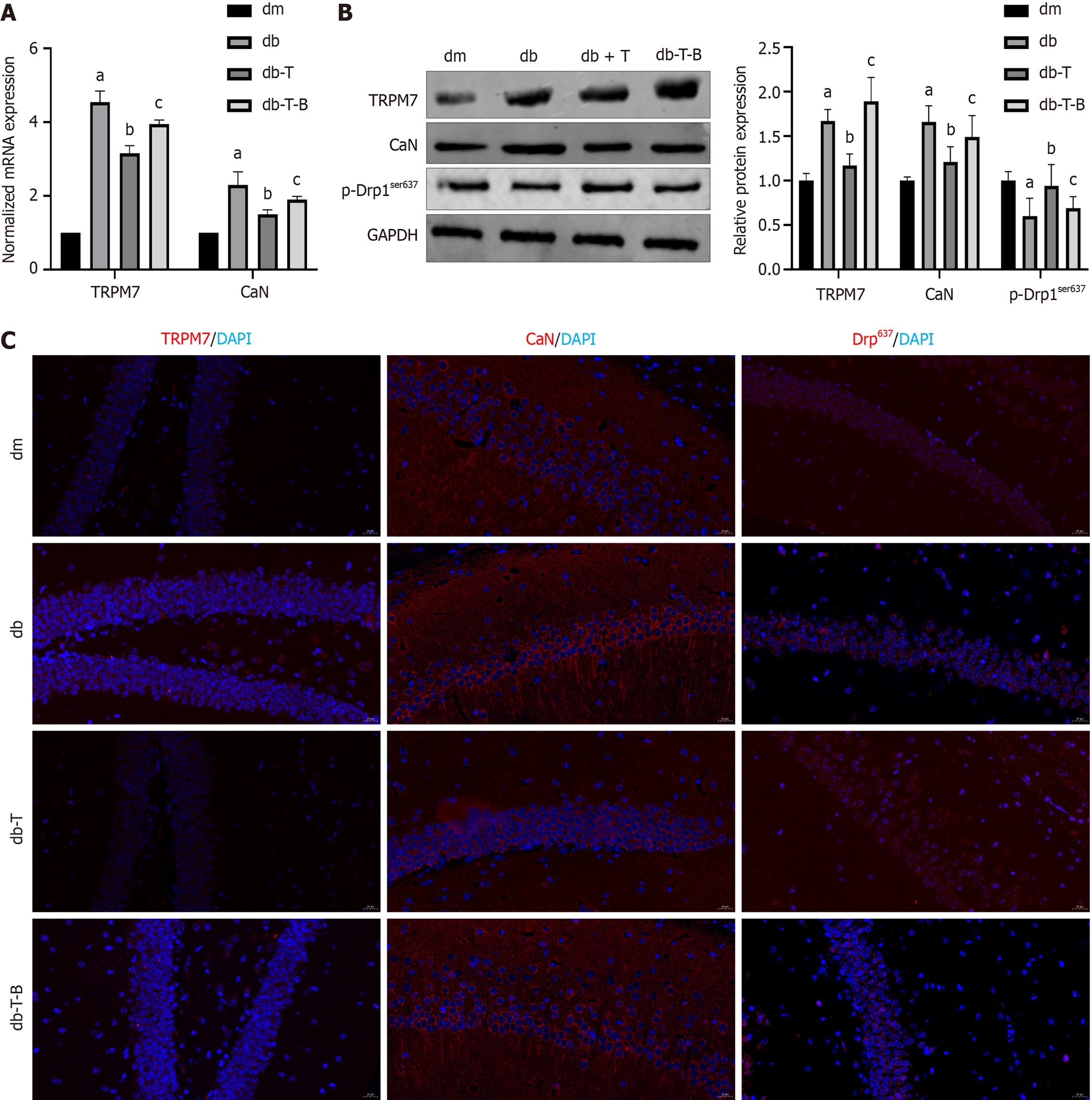Copyright
©The Author(s) 2025.
World J Diabetes. Aug 15, 2025; 16(8): 106833
Published online Aug 15, 2025. doi: 10.4239/wjd.v16.i8.106833
Published online Aug 15, 2025. doi: 10.4239/wjd.v16.i8.106833
Figure 12 Troxrutin improved diabetic cognitive dysfunction by inhibiting the transient receptor potential melastatin 7/calcineurin/p-dynamin-related protein 1ser637 pathway.
A: The normalized mRNA expression of transient receptor potential melastatin 7 (TRPM7) and calcineurin (CaN); B: The relative protein expression of TRPM7, CaN, and p-Drp1ser637; C: Immunofluorescent staining of TRPM7, CaN, and p-Drp1ser637. aP < 0.05, compared with control group; bP < 0.05, compared with diabetes group; cP < 0.05, compared with diabetes + troxerutin group. Data presented as mean ± SEM. TRPM7: Transient receptor potential melastatin 7; Drp1: Dynamin-related protein 1; CaN: Calcineurin; GAPDH: Glyceraldehyde-3-phosphate dehydrogenase; DAPI: 4’,6-diamidino-2-phenylindole; dm: Control group; dm-T: Control + troxerutin group; db: Diabetes group; db-T: Diabetes + troxerutin group; db-T-B: Diabetes + troxerutin + bradykinin group.
- Citation: Li J, Gao M, Wang JX, Li HY, Wang P, Yuan F, Liu AJ, Zhang SY. Troxerutin improves diabetic cognitive dysfunction by inhibiting mitochondrial fission mediated by transient receptor potential melastatin 7/calcineurin/dynamin-related protein 1ser637. World J Diabetes 2025; 16(8): 106833
- URL: https://www.wjgnet.com/1948-9358/full/v16/i8/106833.htm
- DOI: https://dx.doi.org/10.4239/wjd.v16.i8.106833









